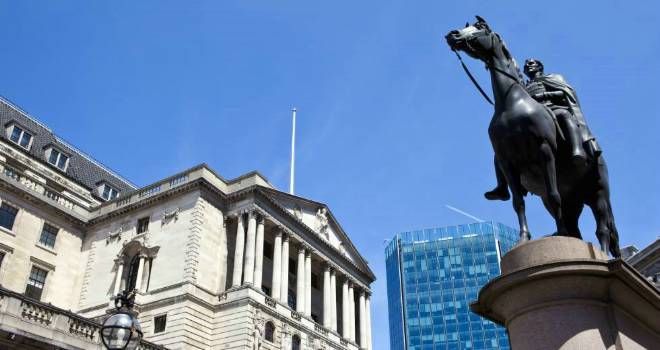
"The large amount of consumer debt means that even when the Bank of England does finally decide to wean the UK off low interest rates, it will be a very slow and steady process."
On 5th July 2007, the Monetary Policy Committee voted to increase rates to 5.75%. A decade on from the last interest rise, the Bank of England is once again mulling a rate hike, though the current level of consumer debt leaves the central bank facing a "tightrope walk on interest rate policy", according to Hargreaves Lansdown.
Those with cash in the bank have now seen a decade of falling returns. £1,000 stashed in a typical instant access account in July 2007 is now worth just £878 after accounting for inflation.
Over the last ten years the amount of money held in non-interest bearing accounts has risen almost eightfold, from £23 billion in 2007 to £179 billion today. At the same time the average rate on the typical instant access account has fallen from 3.3% to 0.4%, and the average rate on non-instant access accounts (including cash ISAs) has fallen from 5% to 0.9%.
While cash savers have undoubtedly felt the pinch from lower interest rates, there have been benefits for borrowers which have helped support the economy. The typical mortgage rate has fallen from 5.8% in July 2007 to 2.6% today.
However it seems consumers are now increasingly taking advantage of low interest rates to load up on debt, which is causing concern at the Bank of England. Only last week the ONS published data which showed that the UK savings ratio has fallen to a record level of 1.7%, which suggests the consumer squeeze is beginning to hit home.
The Bank of England has also warned that consumer credit and mortgage lending are a key risk to financial stability in the UK.
In absolute terms, levels of UK consumer debt are actually higher now than they were on the eve of the financial crisis. Consumer borrowing (including credit cards, overdrafts and loans) now stands at £199 billion, compared with £191 billion in July 2007, and a highest ever level of £209 billion recorded in September 2008. Mortgage borrowing now stands at £1.3 trillion, up from £1.1 trillion in July 2007.
Hargreaves Lansdown says this "all underlines the very difficult situation the Bank of England finds itself in". Raising rates will help to wean investors off borrowing, however it will also make the large existing stock of debt more expensive, which will eat into monthly budgets, putting downward pressure on spending and weighing on economic growth.
However, more members of the monetary policy committee appear to be in favour of a rate rise, which may mean we could soon be in for the first hike since 2007. Markets are now pricing in a 55% chance of a rate rise by the end of the year.
Yet this wouldn’t be the first time that expectations of a rate hike have risen only to be subsequently quashed. At the beginning of 2011, two years after rates had been cut to the emergency level of 0.5%, the market was expecting interest rates to be at 3% by 2014.
Laith Khalaf, Senior Analyst at Hargreaves Lansdown, commented: "The fragile debt dynamics of the UK economy put the Bank of England in a bind, because while a rate hike would help to curb consumer borrowing, it will also make the existing debt mountain less affordable. The central bank therefore faces a tightrope walk between keeping borrowing levels in check, without putting too big a dent in consumer activity, which would have a damaging effect on the UK economy.
"The Monetary Policy Committee has turned more hawkish recently, and expectations of a rate rise have built up considerably in recent weeks. However the large amount of consumer debt means that even when the Bank of England does finally decide to wean the UK off low interest rates, it will be a very slow and steady process."





